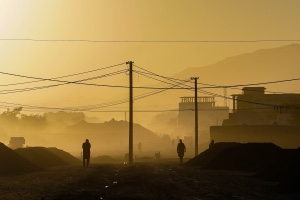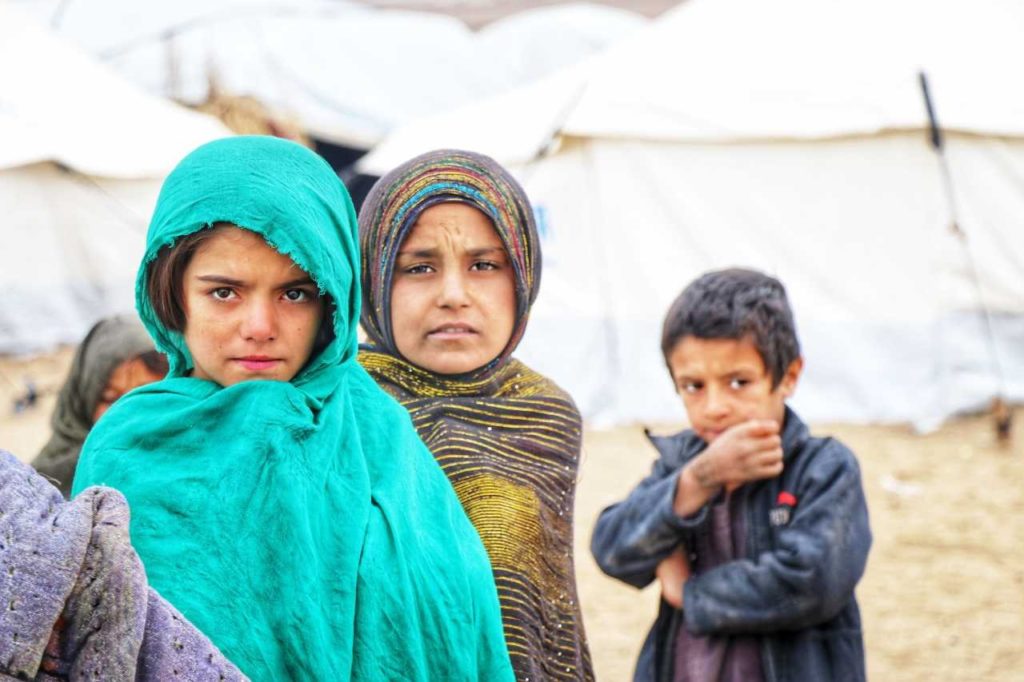
Kabul. Photo by Mohammad Rahmani on Unsplash
Kabul/New York/Doha/New Delhi/Washington DC: “Afghanistan is spinning out of control,” United Nations Secretary-General António Guterres told media persons at the UN Headquarters last night (IST).
With Taliban forces closing in on Kabul, there are widely held apprehensions that urban warfare in the Afghan capital would be catastrophic. “One can only imagine with horror what it would look like in Kabul, a city whose population in a sense is increasing on a regular basis because of the fighting going on outside of the city,” Stéphane Dujarric, Spokesman for the UN Secretary-General, told journalists in New York last night (IST). he added: “The current situation is that we’re evaluating, literally on an hour-by-hour basis, the security situation, both in Kabul and in other locations.”
The United Nations mission in Afghanistan has already pointed out the horrendous impact on civilians of urban warfare in Kandahar, in Lashkargah, and in all those cities now occupied by the Taliban.
“Even [for] a country that has tragically known generations of conflict, Afghanistan is in the throes of yet another chaotic and desperate chapter – an incredible tragedy for its long-suffering people,” Guterres said.
The Afghan negotiating team headed by the Chairman of the High Council for National Reconciliation Dr. Abdullah, which attended the Extended Troika meeting with the participation of Russia, the US, China, and Pakistan in Doha, on August 12, called on the international community, especially the Troika meeting member states, to adopt serious measures to prevent Taliban attacks on cities, which have led to war crimes, widespread human rights abuses and humanitarian catastrophe. Dr. Abdullah also stressed the need to start” meaningful and sincere negotiations to establish an immediate ceasefire and reach a political agreement”. The Afghan foreign ministry reiterated that the continuation of the Taliban’s bloody attacks in collusion with regional and international terrorists will not only lead to a humanitarian catastrophe and the protraction of war in Afghanistan, but also exacerbate violent extremism and incite terrorists in the region posing a serious and irreparable threat to the collective security of the region and the world.
“Therefore, stopping the Taliban violence and crimes in direct collusion with regional and international terrorists will be not only in the interest of Afghanistan but in the interest of the whole world, especially the countries of the region,” it said.
There are tweets from the ground showing dead bodies lying on roads in Kandahar.
In Kandahar province, the Taliban ransacked dozens of men from their homes and shot them on the road.
Hollywood is eerily silent on this pic.twitter.com/9uxDCX2pqq
— Mehrdad Valibeigi مهرداد ولی بیگی (@mvalibeigi2) August 14, 2021
“It would be unconscionable to leave these people to the mercy of the Taliban” said #auspol PM @ScottMorrisonMP on 10 June.
This is what that looks like now. Scenes in Kandahar, southern #Afghanistan. Taliban are going door to door looking for people who supported western govts. pic.twitter.com/OsEQTmGuj4
— Stuart McCarthy (@StuartMcCarthy_) August 13, 2021
Reports suggest that as conflict moved to urban regions of the country women, children, the elderly and other vulnerable people from across Afghanistan were fleeing to Kabul, and many had left with almost nothing. While Guterres mentioned that in the last month alone, more than 1,000 people had been killed or injured from indiscriminate attacks against civilians, notably in Helmand, Kandahar and Herat provinces, Dujarric quoted the “humanitarian community” as verifying 10,350 internally displaced people who arrived in Kabul between July 1 and August 12, 2021. A growing number of these displaced people were staying in the open, he said.

In fact the overall number of those displaced is far more and as per an estimate of the United Nations Office for the Coordination of Humanitarian Affairs (UNOCHA) in Afghanistan, so far this year, nearly 390,000 people had been newly displaced by conflict across Afghanistan, with a huge spike since May.
UN Under-Secretary-General [for Political and Peacebuilding Affairs] Rosemary DiCarlo, said it was a matter of deep concern that civilians were bearing the brunt of the violence.
U.S. Forces Afghanistan-Forward continue to provide security in Kabul, at Hamid Karzai International Airport and at the U.S. Embassy, Pentagon Press Secretary John F. Kirby told reporters on August 13, during a briefing on the U.S. mission.
“These are the existing security elements that were already in Kabul,” Kirby explained. “This comprises the [tactical] and lift aviation assets, infantry, security personnel and some intelligence surveillance and reconnaissance assets that are already there at the airport,” he added. He informed that three battalions were moving from their locations in the U.S. Central Command’s area of responsibility to Kabul: a Marine Corps battalion that was already pre-staged in the region and has lift sustainment and support capabilities and infantry; another Marine Corps infantry battalion from a Marine Expeditionary Unit; and a U.S. Army infantry battalion.
“The rest of their forces will continue to flow over the next couple of days. And I expect that by the end of the weekend the bulk of the 3,000 [service members who are deploying] will be in place,” Kirby said, while reiterating: “This — this is a — a specific, narrowly focused, tailored mission to help with the safe, secure movement of the reduction of civilian personnel in — Kabul — yes, civilian personnel in — in Kabul, as well as to help support the acceleration of the Special Immigrant Visa process by the State Department. That’s what we’re focused on..”.
Replying to a question that how likely was it that the USA will be able to complete the drawdown of forces by August 31, against the backdrop of the speedy advance of Taliban into regional capitals as well as its moving closer to Kabul, Kirby said Pentagon was watching the security situation day by day,…”And if we need to adjust either way, left or right, we’ll do that but we’re — we’re going to always be looking at the security conditions on the ground”.
Kirby said the US was certainly concerned by the speed with which the Taliban had been moving. “And as we’ve said from the very beginning, that this is a, and it still is, a moment for Afghan National Security and Defense Forces, as well as their political leadership. No outcome has to be inevitable here.”
I’m not going to speculate about surprise. We’re obviously watching this just like you’re watching this and seeing it happen in real time and it’s deeply concerning,” he said. According to him the deteriorating conditions were a big factor in why the US President had approved this mission to help support the reduction of personnel there in Kabul. “So, I mean, we’re adjusting as best we can, given those conditions, and again, this is a moment for the Afghans to unite, the leadership and then the military. No outcome has to be inevitable here,” he said.
Kirby made it clear though that although he can’t speak for what that’s going to look like in days to come, “What I can tell you is, where we are now, where we are today, and the mission that we’ve been assigned is to support the State Department’s reduction in personnel by the end of the month. And so that’s what we’re focused on, that’s the timeline we’re focused on”.
As it is, with the Taliban forces approaching Kabul, and the intra-Afghan peace talks effectively stalled in Doha, the United States had been rushing back 3000 troops to Afghanistan and had also kept another 5000 on standby in Qatar and Kuwait- to help evacuate American personnel.
What is significant is that the U.S. airstrikes every day for the last few days have failed to stop the advances of the Taliban. Besides, as per the last updates on the official website of Afghan Defence Ministry, in 24 hours till 10.48 am on August 9, 579 Taliban fighters were killed and 161 wounded. Significantly, there is no further update ever since, when the Taliban forces have made rapid advances.
India as well as Germany, Qatar, Turkey and several other nations have reaffirmed to not recognise any government in Afghanistan that is imposed through the use of military force. On the invitation of Qatar, India had participated in a meeting in Doha on August 12, that included several important stakeholders from Afghanistan. India also discussed further the support of the international community, amidst Taliban’s efforts to gain legitimacy by sending its delegations to different countries including China.
NATO Allies, who met in the North Atlantic Council on August 13 to consult on the situation in Afghanistan, had expressed their deep concerns about the high levels of violence caused by the Taliban’s offensive. “The Taliban need to understand that they will not be recognised by the international community if they take the country by force. We remain committed to supporting a political solution to the conflict,” NATO stated.
Latest news from Doha suggest that Taliban, has reportedly also warned India in particular against any military presence in Afghanistan.
It may be mentioned that on August 12, Indian Ministry of External Affairs Spokesperson, Arindam Bagchi, had already clarified about “some arm support query” during a media briefing in New Delhi. He said India was guided by the strategic partnership agreement that was signed with Afghanistan in October 2011. “I think we are guided by that we would work with that. But I don’t have any specific comment on any element of arm support. I think there are speculations; I won’t get into speculative comments that are in the media,” he said. It may be mentioned that there was a report in a section of the press in India that the Afghan government had sought India’s help to air attack the advancing Taliban.
Meanwhile, the UN has now deployed twenty inter-agency assessment teams in Kabul. As of August 12, the UN along with its partners, had provided food, health, household items, and water and sanitation assistance to some 6,900 men, women and children who had been displaced in Kabul.
In Kunar Province in eastern Afghanistan, since July 25, tens of thousands of people had been displaced by escalating conflict. To date, some 14,000 internally displaced people from Kunar had been identified to receive aid.
“We along with our partners have provided food to almost 4,000 people, and 3,900 people have received emergency shelter and relief items such as kitchen sets and mobile teams are providing basic health and nutrition services,” Dujarric said.
For its part, the Office of the United Nations High Commissioner for Refugees (UNHCR) said it is particularly worried about the impact of the conflict on women and girls. Women and children make up some 80 per cent of the nearly a quarter of a million Afghans forced to flee since May.
It may be mentioned that Taliban had ruled Afghanistan from 1996, before it was ousted by the US forces following the invasion of the country in the wake of the 9/11 attacks. It struck a deal with the United States last February, prompting the withdrawal of US and allied forces from the country this summer.
In the meantime, Dujarric said there was no evacuation of UN staff going on. “We’re, obviously, assessing different places, where to lighten the footprint. But, we’re continuing, in a number of places, notably in Kabul, we’re continuing to deliver the aid that we can,” he said. When asked about Herat and Kandahar, the second and third largest Afghan cities now fallen to the Taliban, he said, “We remain with a very light footprint in those places. I do not have operational details of what we’re actually being able to deliver directly.”
Recently the Taliban spokesman had posted a picture of a UN plane either arriving or leaving. Dujarric explained that as needed, the UN was relocating some staff, both international and national staff, from different places into Kabul.
– global bihari bureau





